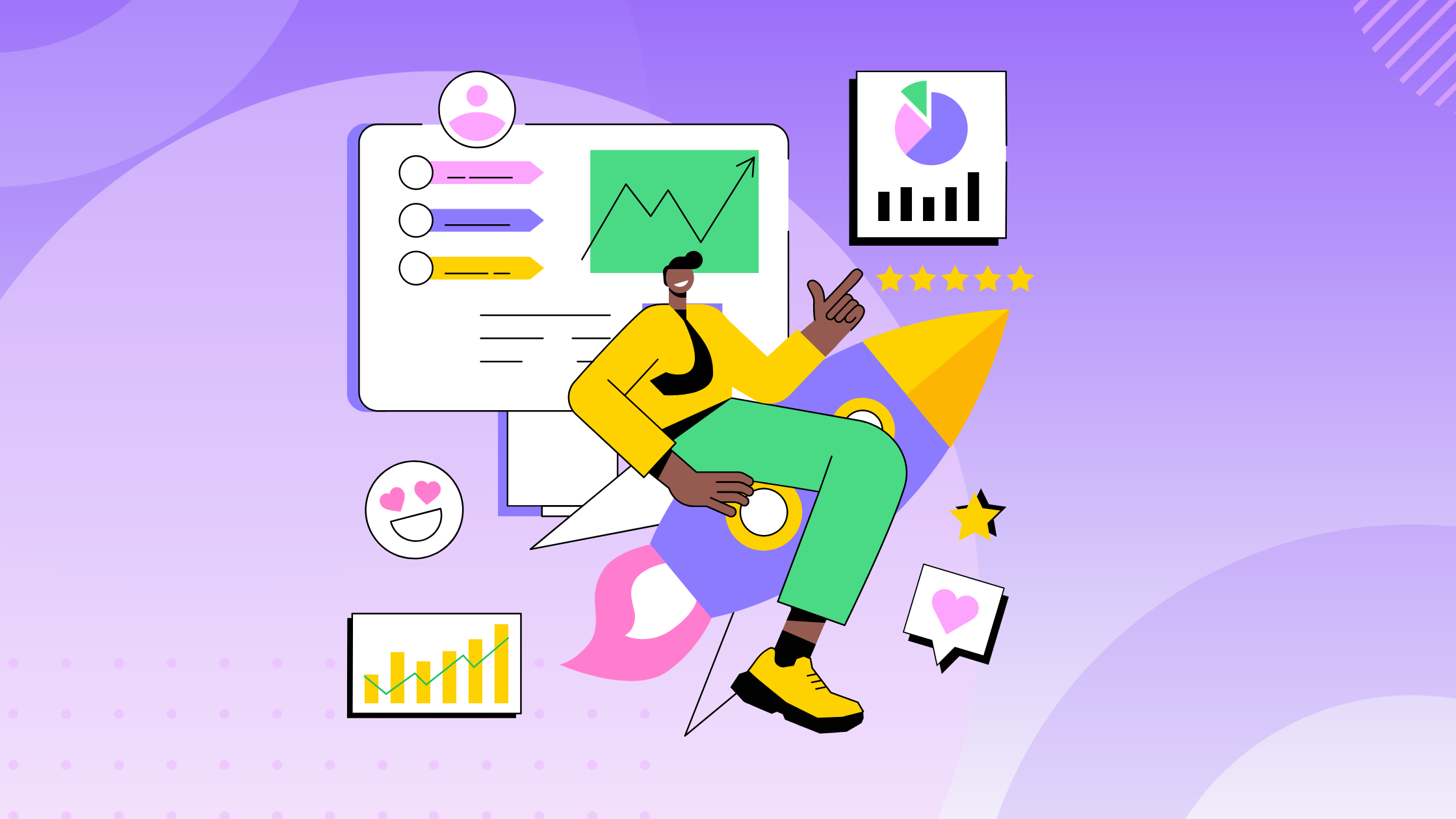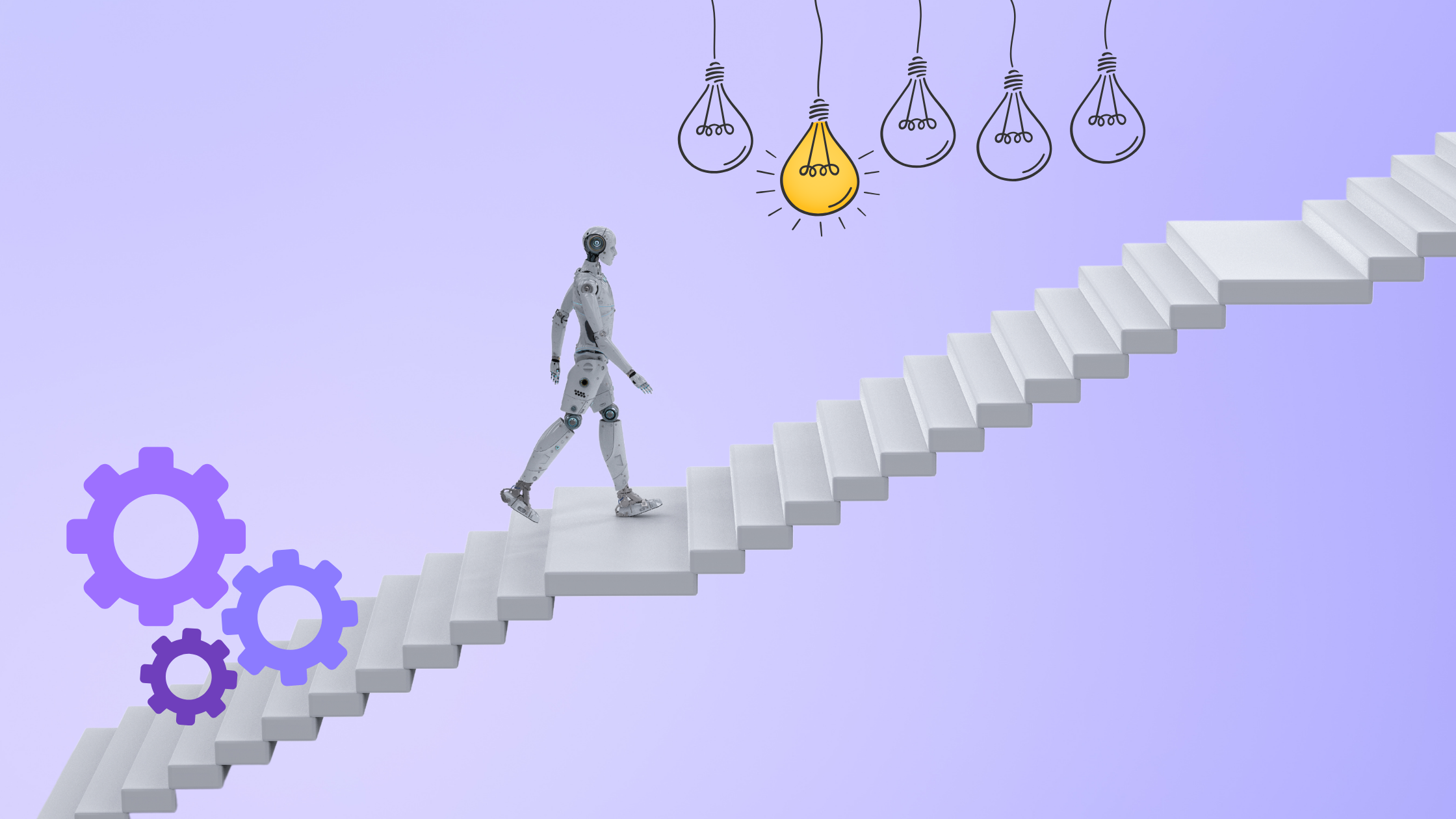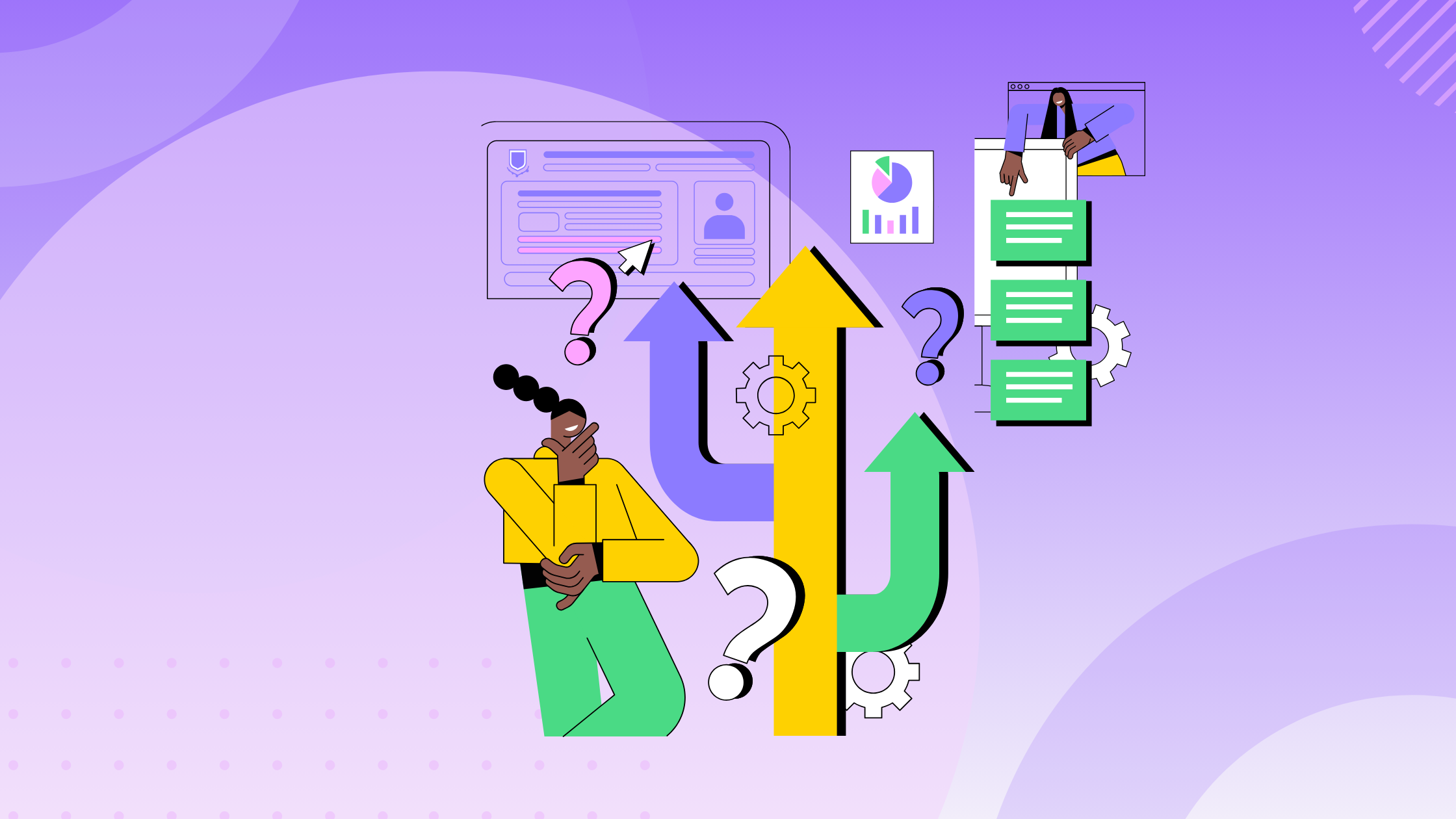A Comprehensive Guide to Conquering Customer Onboarding

Table of Contents
Are you ready to elevate your customer onboarding game? Buckle up because we're about to embark on a journey that will transform the way you welcome new clients and set them up for long-term success.
In today's fast-paced business landscape, customer onboarding has become a crucial element in building strong, lasting relationships with your clients. So, let's dive in and explore how you can create an exceptional onboarding experience that will make your customers fall head over heels for your brand.
What is Customer Onboarding, and Why Does it Matter?
Imagine you've just signed up for a shiny new B2B software as a service (SaaS) product. You're greeted by a customer success manager or onboarding specialist who may send you dozens of email threads, spreadsheet checklists and back and forth. Frustrating, right? It's where customer onboarding comes in.
Customer or client onboarding is the process of introducing new customers to your product or service, guiding them through key features, and helping them achieve their desired outcomes. It's about more than just a welcome email or a quick tutorial — it's a journey that sets the stage for a long-term relationship between you and your customers.
But why does it matter so much? Well, consider this: a staggering 51% of customers who have a poor onboarding experience are likely to abandon a product within the first month. On the flip side, companies with a strong onboarding process can boost customer retention by 50%. The numbers don't lie — nailing your onboarding is essential for business success.
The Evolution of Customer Onboarding
Customer onboarding has come a long way since the early days of software adoption. Gone are the days of lengthy user manuals and generic training sessions. Today's onboarding landscape is characterized by personalization, automation, and a focus on long-term success.
One of the most significant shifts we've seen in recent years is the rise of customer onboarding software. Platforms like OnRamp have revolutionized the way companies approach onboarding, offering a centralized hub for project management, customer collaboration, and progress tracking. By leveraging these tools, businesses can streamline their processes, reduce manual effort, and deliver a more consistent, high-quality experience to every customer.
Looking ahead to 2024 and beyond, customer onboarding automation is set to take center stage. Imagine a world where artificial intelligence (AI) powered chatbots guide customers through setup, machine learning algorithms personalize the onboarding journey based on customer behavior, and predictive analytics identify and address potential roadblocks before they become deal-breakers. The future of onboarding is smart, seamless, and hyper-personalized.
The Customer Onboarding Process
Now that we've covered the what and why of customer onboarding, let's dive into the nitty-gritty of how it all comes together. From the initial handoff to ongoing optimization, buckle up for a wild ride through the key stages of the onboarding process.
1. Sales to Customer Success (CS) Handoff
The onboarding journey begins before the ink on the contract is even dry. A smooth transition from sales to customer success is crucial for setting the right tone and ensuring that all relevant information is passed along.
Best practices include:
- Having a standardized handoff template.
- Aligning on key objectives and milestones.
Tools like OnRamp can streamline this process by providing a central hub for project management and collaboration.
2. Pre-onboarding Prep
Before diving into the actual onboarding, it's important to do your homework. This means gathering key information about the customer's goals, pain points, and technical setup.
Take the time to customize your onboarding plan based on the customer's unique needs and priorities. It could involve creating tailored learning paths, identifying key stakeholders to engage, and setting up the necessary integrations and configurations.
3. Welcome Email
The welcome email is your chance to make a great first impression and set the stage for the onboarding journey ahead. Keep it concise, engaging, and action-oriented.
Some key elements to include:
- A warm welcome and excitement about the partnership
- Clear next steps and expectations for the onboarding process
- Links to key resources like knowledge bases, community forums, and training videos
- Contact information for the onboarding team
4. Kick-off Meeting
The kick-off meeting is where the rubber meets the road. This is your opportunity to align on goals, timelines, and responsibilities and to start building a personal relationship with your customer.
Come prepared with an agenda that covers:
- Introductions and roles
- Review of onboarding plan and milestones
- Demo of key features and use cases
- Q&A and next steps
Make sure to leave plenty of time for discussion and keep the tone conversational and collaborative. The goal is to leave the customer feeling confident and excited about the journey ahead.
5. Education and Training for Adoption
Now, it's time to dive into the actual education and training. The key here is to balance comprehensive coverage with bite-sized, digestible content.
Consider a blended approach that includes:
- Self-paced online courses and tutorials
- Live webinars and workshops
- Hands-on practice exercises
- Office hours and 1:1 coaching sessions
Use a variety of formats like videos, infographics, and interactive simulations to keep things engaging. And don't forget to gather feedback and adjust your approach based on what's resonating with customers.
6. Engagement and Relationship Building
Onboarding isn't just about imparting knowledge — it's also about building a strong, ongoing relationship with your customer. This means regular check-ins, proactive communication, and a genuine interest in their success.
Some strategies to consider:
- Regularly scheduled status calls
- Personalized email outreach
- Shared project plans and progress tracking
- Celebrating milestones and quick wins
- Soliciting feedback and acting on it
The goal is to become a trusted partner and advisor, not just a vendor. Show that you're invested in their long-term success and watch the relationship thrive.
7. Evaluation
As the onboarding process starts to wrap up, it's important to take a step back and evaluate how things went. This means looking at both quantitative metrics like feature adoption and time-to-value, as well as qualitative feedback from the customer.
Some key questions to consider:
- Did we meet our defined onboarding goals and milestones?
- How engaged and satisfied was the customer throughout the process?
- What worked well, and what could be improved for future onboarding?
- Are there any lingering issues or concerns that need to be addressed?
Use this evaluation phase to celebrate successes, identify areas for improvement, and inform your ongoing customer success strategy.
8. Optimization
The onboarding process doesn't end when the customer is up and running — it's an ongoing cycle of optimization and improvement. This means continuously gathering feedback, analyzing data, and experimenting with new approaches.
Some tactics to consider:
- A/B testing different onboarding flows and content
- Personalizing the experience based on customer behavior and preferences
- Automating repetitive tasks and communications
- Regularly refreshing and updating content based on product changes and customer feedback
The goal is to create a living, breathing onboarding program that evolves alongside your customers' needs and your business goals. With the right mindset and tools, you can turn onboarding into a key differentiator and growth engine for your business.
Best Practices for Customer Onboarding
Now that we've explored the key components of the customer onboarding process, let's dive into key best practices that can help you take your efforts to the next level:
- Start with the end in mind: Define clear goals and success metrics for your onboarding program, and work backward to design an experience that delivers on those objectives.
- Keep it simple and focused: Resist the urge to overwhelm new customers with too much information or too many options. Focus on the key features and use cases that will deliver the most value quickly.
- Personalize the experience: Use data and customer feedback to tailor the onboarding journey to each customer's unique needs and preferences. It could include customized learning paths, targeted content recommendations, and personalized outreach from the CS team.
- Make it interactive and engaging: Ditch the boring slideshow presentations and lengthy user manuals. Embrace interactive tutorials, gamification, and multimedia content to keep customers engaged and motivated.
- Provide ongoing support and resources: Onboarding doesn't end after the first few weeks. Make sure customers have easy access to ongoing support, training, and resources to help them continue to succeed with your product over time.
How to Onboard a Customer?
So, you're ready to put these best practices into action and onboard your first customer. Here's a step-by-step guide to get you started:
- Define your goals and success metrics: What does a successful onboarding look like for this particular customer? Is it getting them to complete a certain set of tasks within the first week? Achieving a certain level of feature adoption within the first month? Clarify your objectives upfront to guide your approach.
- Gather key information about the customer: What are their specific goals and pain points? What does their technical setup look like? Who are the key stakeholders and decision-makers? Use a combination of sales notes, customer interviews, and data analysis to build a comprehensive profile.
- Create a customized onboarding plan: Based on the information you've gathered, map out a tailored onboarding journey that includes key milestones, training sessions, and check-ins. Consider using a customer onboarding template or onboarding project management software to keep things organized and on track.
- Kick things off with a bang: Schedule a kick-off meeting to introduce the customer to your team, review the onboarding plan, and set expectations for the journey ahead. Keep the tone upbeat and collaborative, and leave plenty of time for questions and discussion.
- Deliver engaging training and support: Roll out your education and training program using a mix of self-paced and instructor-led sessions to cater to different learning styles. Provide plenty of hands-on practice opportunities and real-world examples to help customers apply what they're learning.
- Stay engaged and proactive: Throughout the onboarding process, keep the lines of communication open and be proactive in identifying and addressing any roadblocks or concerns. Celebrate quick wins and milestones along the way to keep motivation high.
- Measure and optimize: As you wrap up the initial onboarding, take time to evaluate what worked well and what could be improved. Use a combination of quantitative metrics (e.g. feature adoption, time-to-value) and qualitative feedback (e.g. customer satisfaction surveys, interviews) to assess your success and identify areas for optimization.
By following this systematic approach and using tools like onboarding playbooks, software solutions, and customer journey maps, you can deliver a world-class onboarding experience that sets your customers up for long-term success.
Tips for Building a Customer Onboarding Plan
A well-crafted onboarding plan is the backbone of any successful onboarding program. Here are some tips to help you build a plan that's comprehensive, actionable, and tailored to your customer's needs:
Start by defining the key phases of the onboarding journey, from initial kickoff to ongoing support. For each phase, identify the specific goals, activities, and deliverables that will guide the customer to success. Use a customer onboarding template or framework to ensure you're covering all the essential elements.
Next, map out the key touchpoints and interactions that will happen throughout the onboarding process. This could include things like welcome emails, training sessions, check-in calls, and milestone celebrations. Consider how you'll use different channels and formats to engage customers and keep them motivated.
As you build out the plan, keep an eye on the overall timeline and pacing. You want to strike a balance between providing comprehensive coverage and keeping things moving at a brisk pace. Use time-boxing techniques and clear deadlines to ensure the onboarding stays on track.
Finally, don't forget to build in flexibility and room for customization. Every customer is unique, so your onboarding plan should be adaptable to their specific needs and goals. Use a modular approach and provide options for self-paced learning to allow customers to tailor the experience to their preferences.
By following these tips and using tools like project management software, onboarding automation, and customer feedback loops, you can create an onboarding plan that sets your customers up for long-term success and loyalty.
Analyzing and Measuring Customer Onboarding
Measuring the success of your customer onboarding efforts is crucial for understanding what's working and what's not and how you can optimize the experience over time. Here are some key customer onboarding metrics and strategies to consider:
- Engagement metrics: Look at how actively customers are engaging with your onboarding content and activities. This could include things like email open rates, tutorial completion rates, and attendance at live training sessions. If engagement is low, it could be a sign that your content is too complex or not relevant to customers' needs.
- Adoption metrics: Track how quickly and extensively customers are adopting key features and functionalities of your product. Use cohort analysis to compare adoption rates across different customer segments and identify any common roadblocks or drop-off points.
- Time-to-value: Measure how long it takes for customers to achieve their first "quick win" or meaningful outcome with your product. If time-to-value is too long, it could indicate that your onboarding is too complex or not focused enough on driving early success.
- Retention and churn: Keep an eye on long-term retention and churn rates to understand the impact of your onboarding on customer loyalty. If churn is high in the first few months, it could be a sign that your onboarding is not setting customers up for ongoing success.
- Qualitative feedback: Don't rely on quantitative metrics alone. Use surveys, interviews, and other feedback mechanisms to gather qualitative insights from customers about their onboarding experience. Look for common themes and pain points that you can address in future iterations.
By regularly tracking and analyzing these metrics, you can gain a comprehensive picture of your onboarding performance and identify opportunities for improvement.
Types of Customer Onboarding
Not all customer onboarding looks the same. Depending on your industry, product, and target audience, you may need to tailor your approach to fit specific needs and constraints. Here are some common types of onboarding and how they differ:
Different Industry Onboardings
Let's take a closer look at how onboarding differs across three key industries:
- SaaS: In the SaaS world, onboarding often focuses on guiding customers through key product features and helping them achieve their desired outcomes. Effective SaaS onboarding typically involves a combination of in-app guidance, targeted email campaigns, and self-service resources like knowledge bases and community forums.
- Professional services: For professional services firms, onboarding is often more high-touch and customized to the client's unique needs. Key activities might include scoping and planning sessions, team training and enablement, and regular progress check-ins. The goal is to build a strong partnership and deliver measurable results for the client.
- Retail and distribution: In the retail and distribution space, onboarding often involves setting up new vendor relationships, streamlining supply chain processes, and ensuring compliance with relevant regulations and standards. Effective onboarding in this context requires close collaboration between multiple teams and functions.
User Onboarding vs Customer Onboarding
While user onboarding and customer onboarding are often used interchangeably, they refer to slightly different contexts:
- User onboarding is product-led, focusing on guiding individual users through key features and functionalities of a software application using automated technology, such as in-app tutorials and tooltips. It's designed to be self-guided and scalable.
- Customer onboarding, on the other hand, is a comprehensive, high-touch process that begins with a sales-led engagement and transitions to a dedicated account manager or customer success manager. They work closely with the customer to develop a tailored onboarding plan and guide them through a personalized experience that goes beyond individual customer adoption. It includes activities like project kickoffs, customized training, and regular check-ins to ensure the customer derives maximum value from the product or service.
While there is certainly overlap between the two concepts, it's important to tailor your approach based on the specific context and goals of your onboarding program.
White Glove Onboarding
For high-value or enterprise customers, a "white glove" onboarding approach may be warranted. This involves a dedicated success manager or onboarding specialist who works closely with the customer to understand their unique needs and goals and then crafts a highly customized onboarding plan to ensure success.
White glove onboarding often includes things like on-site training, custom integrations and configurations, and ongoing strategic consulting to help the customer maximize value from the product or service. It's a more resource-intensive approach, but can be highly effective for complex implementations or mission-critical use cases.
Tools and Software Solutions for Streamlining the Customer Onboarding Process
To streamline and automate key aspects of the customer onboarding process, many companies turn to specialized software solutions. Customer onboarding platforms like OnRamp offer a range of features and capabilities to support effective onboarding, such as:
- Project management and task tracking
- Customer collaboration and communication tools
- Knowledge base and resource center creation
- Progress monitoring and reporting dashboards
- Integration with CRM and other business systems
By leveraging these tools, companies can create a more efficient, personalized, and scalable onboarding experience for their customers.
Benefits and Considerations of Utilizing Such Technologies
Implementing customer onboarding software can offer a range of benefits for businesses, including:
- Improved efficiency and productivity: By automating key tasks and workflows, teams can save time and focus on higher-value activities.
- Enhanced customer experience: With personalized resources and proactive communication, customers feel supported and empowered throughout the onboarding journey.
- Better data and insights: Onboarding platforms provide real-time data and analytics to help teams track progress, identify issues, and make data-driven improvements.
- Increased retention and revenue: By setting customers up for success from the start, businesses can reduce churn and drive long-term growth.
How To Create a Customer Onboarding Strategy?
Developing a comprehensive customer onboarding strategy can seem daunting, but it doesn't have to be. Here's a simple 5-step framework to help you get started:
- Define your goals and objectives: Start by clearly defining what success looks like for your onboarding program. Consider metrics like time-to-value, adoption rates, and customer satisfaction scores.
- Map out the customer journey: Walk through the end-to-end customer experience, from initial contact to ongoing adoption and advocacy. Identify key touchpoints and milestones along the way.
- Develop your content and resources: Based on your customer journey map, create targeted content and resources to support each stage of the onboarding process. This might include welcome emails, product tutorials, case studies, and more.
- Implement and automate: Put your plan into action by setting up the necessary systems and processes. Leverage customer onboarding software to automate key tasks and workflows where possible.
- Measure and optimize: Continuously track and analyze key onboarding metrics to identify areas for improvement. Use these insights to refine your strategy and tactics over time.
By following this simple framework and adapting it to your unique business context, you can develop a customer onboarding strategy that drives long-term success.
Whose Job Is Customer Onboarding?
Customer onboarding is a cross-functional effort that involves multiple teams and stakeholders across the organization. While the specific roles and responsibilities may vary depending on the company and industry, here are some of the key players typically involved:
- Sales team: The sales team is often the first point of contact for new customers and plays a crucial role in setting expectations and gathering key information during the sales process.
- CS team: The customer success team is typically the primary owner of the onboarding process. Customer Success Managers (CSMs) work closely with customers to provide ongoing support and serve as trusted advisors throughout the relationship.
- Account managers: In some organizations, account managers play a key role in the onboarding process, particularly for larger or more strategic customers.
- Implementation specialists: For more complex products or services, dedicated implementation specialists may be involved in the onboarding process.
Customer Onboarding Examples
Nothing is better than learning from other successful customer onboarding initiatives and case studies. Here are our few favorite success stories:
- Learn how MovableInk reduced client onboarding time by 50%.
- How Taylor streamlined customer onboarding and scaled
- How OnRamp helped boost client engagement, visibility, and efficiency for Order
Boost Your Customer Onboarding Success With OnRamp
Congratulations! You've made it to the end of this comprehensive guide on mastering customer onboarding. Remember, customer onboarding is not just a one-time event but an ongoing process that requires commitment, collaboration, and continuous improvement.
And if you're looking for a powerful tool to help streamline and automate your onboarding process, look no further than OnRamp. Our all-in-one customer onboarding platform makes it easy to manage projects, collaborate with customers, and track key metrics all in one place.
So why wait? Schedule a demo today and see how we can help you take your customer onboarding to the next level.
Melissa Scatena is a customer onboarding expert and marketing professional at OnRamp, where she creates content and events focused on helping customer success teams thrive. She’s passionate about making complex processes simple and delivering exceptional customer experiences.
Related Posts:

How To Scale Efficiently With Customer Onboarding Automation
Technology powered by artificial intelligence (AI) is all the buzz in every industry this year. In 2025, we expect automation to go...

Customer Success Platform, CRM or Client Portal: Which Do You Need?
With so many business enablement tools today, it can be tough to decide which are worth the investment. You want to have the best...

How to Build a Self-Serve Customer Onboarding Process
Did you know it takes 100 days to onboard the average corporate client?